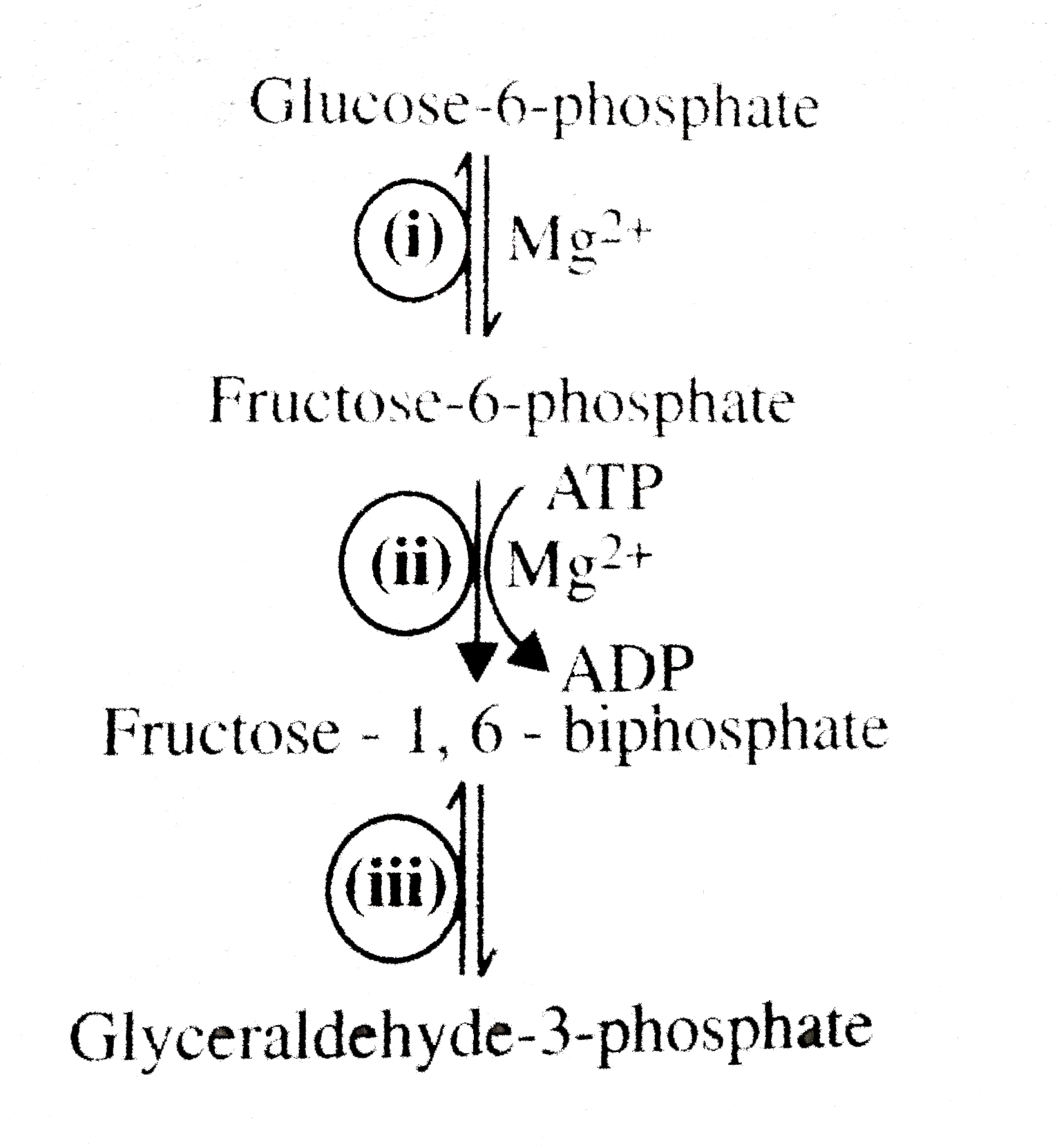Which step of glycolysis requires pyruvic kinase, Mg++,K+andADP?
Conversion of PEP into pyruvic acid
Conversion of 3PGA into 2PGA
Cleavage of Fructose 1-6 Biphosphate
All of the above
The correct Answer is:A
Step-by-Step Solution:
1. Understanding Glycolysis: Glycolysis is a metabolic pathway that converts glucose into pyruvate, producing ATP and NADH in the process. It consists of several steps, each catalyzed by specific enzymes.
2. Identifying the Enzyme: The question specifically mentions "pyruvic kinase," which is an enzyme involved in the conversion of phosphoenolpyruvate (PEP) to pyruvic acid (pyruvate).
3. Recognizing the Reaction: The reaction catalyzed by pyruvic kinase involves the transfer of a phosphate group from PEP to ADP, resulting in the formation of ATP and pyruvate. This is a crucial step in glycolysis.
4. Role of Cofactors: The question also mentions the requirement of magnesium ions (Mg²⁺) and potassium ions (K⁺). These ions serve as cofactors that assist the enzyme pyruvic kinase in its catalytic activity.
5. Identifying the Step: The conversion of phosphoenolpyruvate (PEP) to pyruvic acid is the last step of glycolysis. Therefore, this step is the one that requires pyruvic kinase, Mg²⁺, K⁺, and ADP.
6. Conclusion: The correct answer to the question is the conversion of PEP into pyruvic acid, which is the last step of glycolysis.
Final Answer: The step of glycolysis that requires pyruvic kinase, Mg²⁺, K⁺, and ADP is the conversion of phosphoenolpyruvate (PEP) into pyruvic acid.
---
Topper's Solved these Questions
Similar Questions
Knowledge Check
Study the given steps of glycolysis and identify the enzymes (i),(ii) and (iii) responsible for carrying out these steps.
 A(i)(ii)(iii).Phosphohexose isomerasePhospho-fructokinase-Phospho-fructokinaseAldolaseB(i)(ii)(iii).HexokinasePhospho-fructokinaseAldolaseC(i)(ii)(iii).Phosphohexose isomeraseHexokinasePhosphofructo-kinaseD(i)(ii)(iii).AldolasePhospho-fructokinasePhosphohexose isomerase
A(i)(ii)(iii).Phosphohexose isomerasePhospho-fructokinase-Phospho-fructokinaseAldolaseB(i)(ii)(iii).HexokinasePhospho-fructokinaseAldolaseC(i)(ii)(iii).Phosphohexose isomeraseHexokinasePhosphofructo-kinaseD(i)(ii)(iii).AldolasePhospho-fructokinasePhosphohexose isomerase
Dehydration step of glycolysis is catalysed by which enzyme ?
View SolutionFor undergoing glycolysis, glucose requires priming with the help of ATP
View SolutionWhich enzyme of glycolysis is also called as pacemaker enzyme ?
View SolutionWhich of the following connects glycolysis to Krebs cycle ?
View SolutionWhich of the given enzymes of glycolysis is required at the beginning of process ?
View SolutionPyruvic acid, the last product of glycolysis, is degraded to CO2 and H2o
View SolutionExplain the major steps of glycolysis. Where does this process occur in a cell?
View Solution
